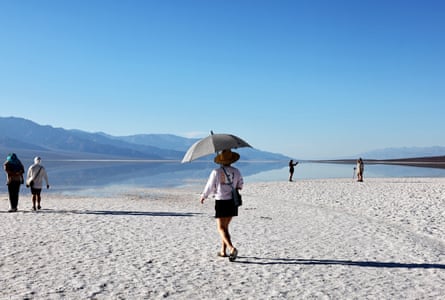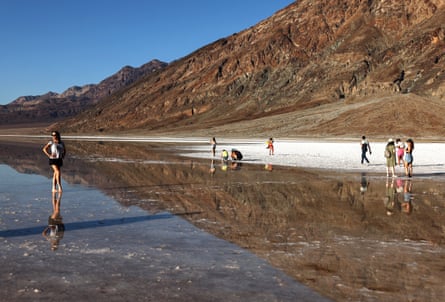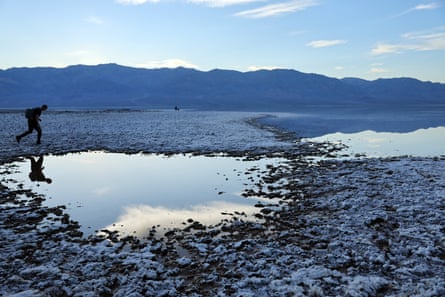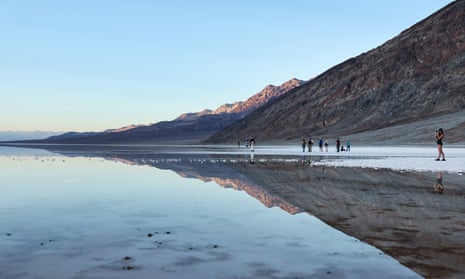After months of closure, visitors to Death Valley national park are being greeted by stunning new features, including lakes left behind by a ferocious summer deluge.
The park reopened last week after being shuttered in August, when a record-breaking tropical storm unleashed a year’s worth of rain in a single day.
Dramatic images emerging from the park show arid dunes now dotted with lakes.
“Some spectacular things happened in Death Valley following the floods we received from remnants of Hurricane Hilary back in August,” the park wrote in an Instagram post on Sunday.
“Ephemeral lakes popped up around the park, which is both pretty rare and amazing!” they added. “Lakes in the sand dunes wasn’t on our 2023 bingo card.”


The floodwaters have transformed the famous Badwater Basin salt flats, which are now covered in shimmering water believed to be about 2ft deep. “That’s what it was in 2005, the last time there was a significant lake there,” park ranger Matthew Lamar, told the Los Angeles Times.
While the park is experiencing its wettest moment in close to two decades, the waters won’t last long. “It depends in part on temperatures,” Lamar added, but with the landscape’s high evaporation rate, there may be just weeks before they recede.
The basin, which sprawls across close to 200 sq miles and typically features striking salt formations, once housed an ancient lake that evaporated tens of thousands of years ago. At 282ft below sea level, it’s the lowest point in North America.
This year marked the second consecutive year in which the park was forced to close due to a record-breaking rain event, and crews are still working to repair damage left in 2022. The fierce downpour this past summer added to the destruction as roads were washed away and infrastructure was doused in mud.

Death Valley, considered the hottest place in the world and the driest on the continent, is accustomed to extremes. This summer, temperatures in the park regularly topped 120F, making it not only one of the wettest but the hottest years yet.
Deep mud cracks, where water carved through the sediment and evaporated, tell the stories of age-old storms and add to the desert ambience that make these lands so special. This flood, too, left its mark on the human-made structures and natural ones alike.
“Every so often, there are events that are large enough to break weather records and cause significant damage to historic locations and park infrastructure,” the National Park Service wrote on the park’s website. “The natural forces that formed this landscape are still at play.”
